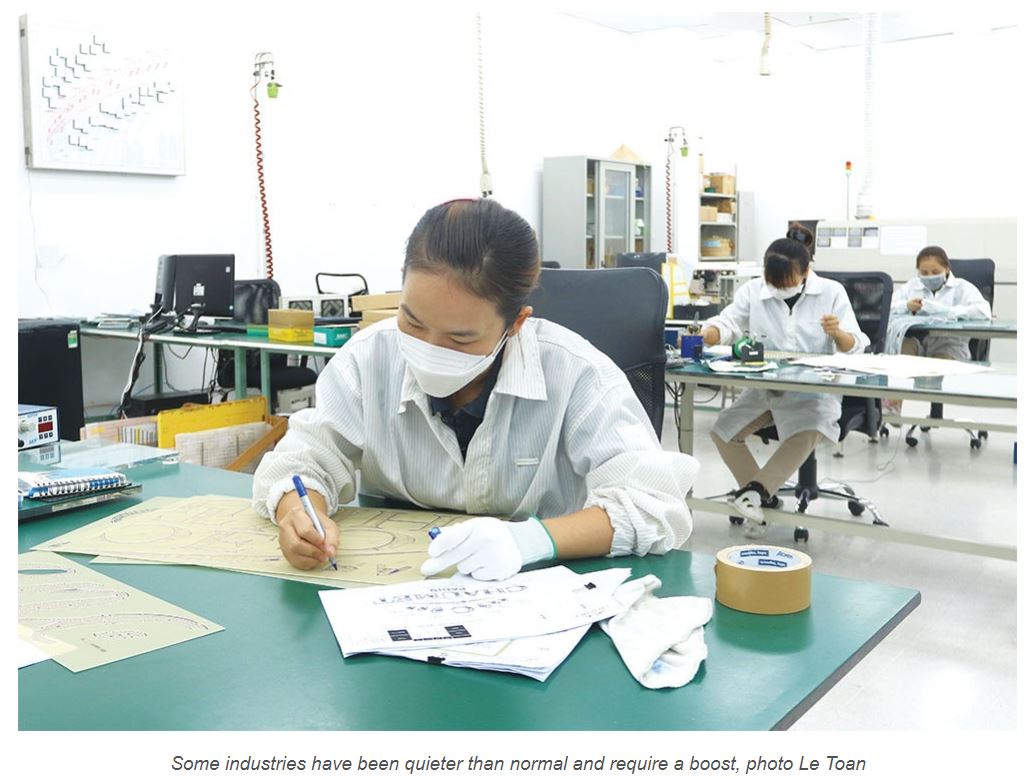Vietnam: Guidance necessary for the new VAT plan
Businesses are expecting another VAT reduction of 2 per cent from this month, along with clear guidance documents to ensure favourable implementation.
From July 1 to the end of the year, VAT is being cut by 2 per cent, applied on the majority of goods, according to the resolution released on June 24 at the fifth session of the National Assembly, excluding telecommunications, IT, banking, securities, insurance, real estate, metals, prefabricated metal products, mining products (not coal mining), coke, refined petroleum, chemical products, goods, and services subject to excise tax.
A similar policy was applied last year. However, continued difficulties have prompted the legislature to re-use the policy, hoping that it will help enterprises to reduce production costs, recover business activities, and raise demand.
For Bic C and GO! retail supermarket chain under Central Retail in Vietnam, the 2 per cent VAT reduction programme will reduce the selling price of goods, and stimulate consumer demand amid numerous difficulties.
“To join hands with the government, Central Retail and all of its retail banners are actively preparing and ready for implementation of the VAT reduction from July. We are to change over four million prices on our systems to reflect this reduction. We hope the VAT cut would help boost the domestic consumption,” said Nguyen Thi Bich Van, head of Communications at Central Retail in Vietnam.
Huyen Pham Production Service & Trading, a fabric, clothes, and footwear, is pleased about the policy and hoping to save a significant amount of money, according to a representative.
“The fashion and garment industry has been quiet for more than half a year, due to the economic difficulties. I expect the VAT reduction to push up demand and for many more orders to come,” said Huyen, director of the company.
However, the implementation last year caused some confusion, and the Vietnam Chamber of Commerce and Industry (VCCI) said some goods and services had price management measures applied by the state.
In a report sent to the Ministry of Finance, the VCCI wondered whether such goods had to reduce the selling prices (equivalent to the 2 per cent cut from tax) or not, and which procedures businesses needed to adjust the prices.
During the implementation of the policy last year, businesses faced difficulties and needed guidance. A number of goods and services can be cut down by 2 per cent easily, but it is hard for some goods and services to adjust a small value.
“We suggest that businesses do not need to carry out price adjustment procedures and are allowed to apply the registered and declared prices,” said Dau Anh Tuan, VCCI vice secretary general and director of the Legal Department.
Besides this, the list of goods and services not subject to VAT reduction last year does not correspond to the description of goods in the list of Vietnam’s exports and imports, leading to difficulties in determining the HS codes for imported goods, especially those described as “goods not yet classified.”
In fact, some businesses claim that the classification of goods and services entitled to the rate of 8 or 10 per cent last year was too complicated. “Businesses don’t know if they’re doing it right or wrong. In many cases, two businesses buy and sell goods together, but they do not agree on the tax rate, so the contract cannot be conducted. Even the tax and customs authorities are also confused in the classification of goods and services,” the VCCI representative said.
The VCCI and businesses recommended using the taxonomy of imported goods according to the customs regulations as a basis to build the list of goods for VAT reduction. So imported goods can easily determine the tax rate, instead of last year’s situation that both imported and domestic goods struggled with determining the tax rate.
“If not using the imported goods classification table, it is necessary to list all the HS codes of imported goods subject to 10 per cent VAT,” the VCCI proposed.
The total VAT reduction package in 2022 was about VND44 trillion ($1.83 billion). However, during the implementation process, it was difficult for both taxpayers and tax authorities to identify goods and services that were not subject to tax reduction. Firms are also expected to simplify invoices, applying a reduction to all goods to loosen the pressure on paperwork for all of them.
It is estimated that this year’s budget will lose about VND24 trillion ($1 billion) in revenue when VAT is reduced to 8 per cent in the second half.
Source: VIR


 English
English




